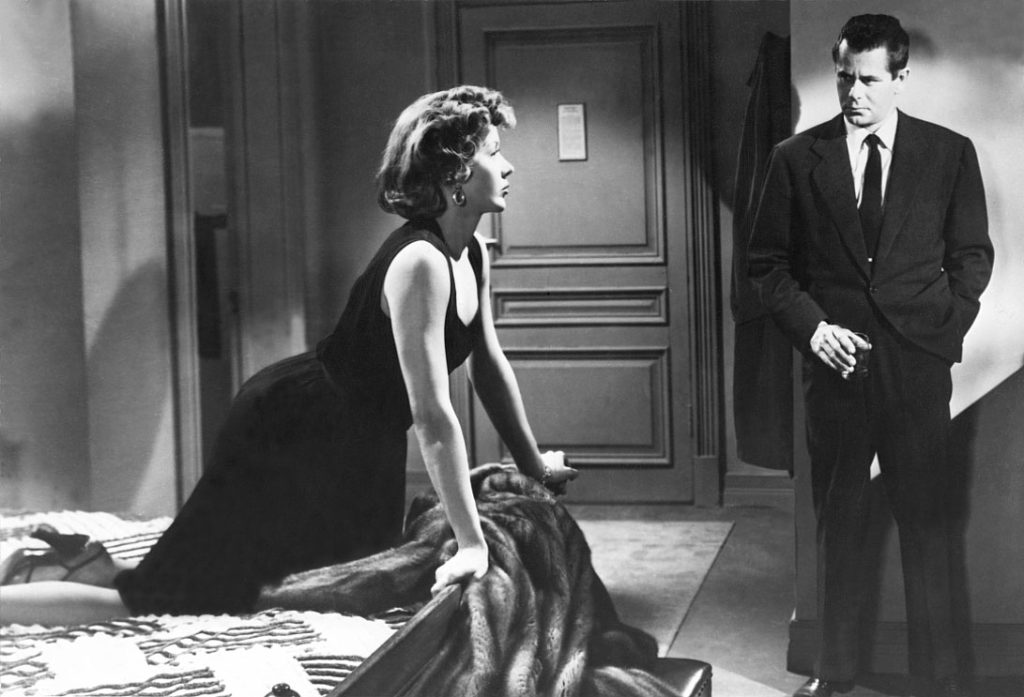
04 Mar Fashion in Classic Film Noir: The Big Heat (1953)
The Big Heat is a 1950s film noir, different from its 40s counterparts in fashion for both sexes. For men, fashion became more casual and leisurely for after work hours, and for women everything became hyper feminine and plenty of foundation wear that helped to achieve an hourglass figure was back in style.
Starring actor Glenn Ford (you may remember him from the last post on Gilda) as police detective sergeant David Bannion, The Big Heat centers around the themes of justice and corruption. If you are familiar with director Fritz Lang’s work you know he has a way of turning things on their head and portraying people and a story one way on the surface, but underneath revealing the brutality, darkness, and pessimism of society.
Bannion’s hate for injustice prevails all, and nothing (and no one) can stop his mission—not even multiple deaths, which one can argue, are, at least in part, his fault. To highlight this theme, I like to reference a piece of dialogue spoken by Commissioner Higgins (Howard Wendell) around the middle of the film. He warns Bannion that he’s on a “hate binge” and that “you can’t set yourself against the world and get away with it.”
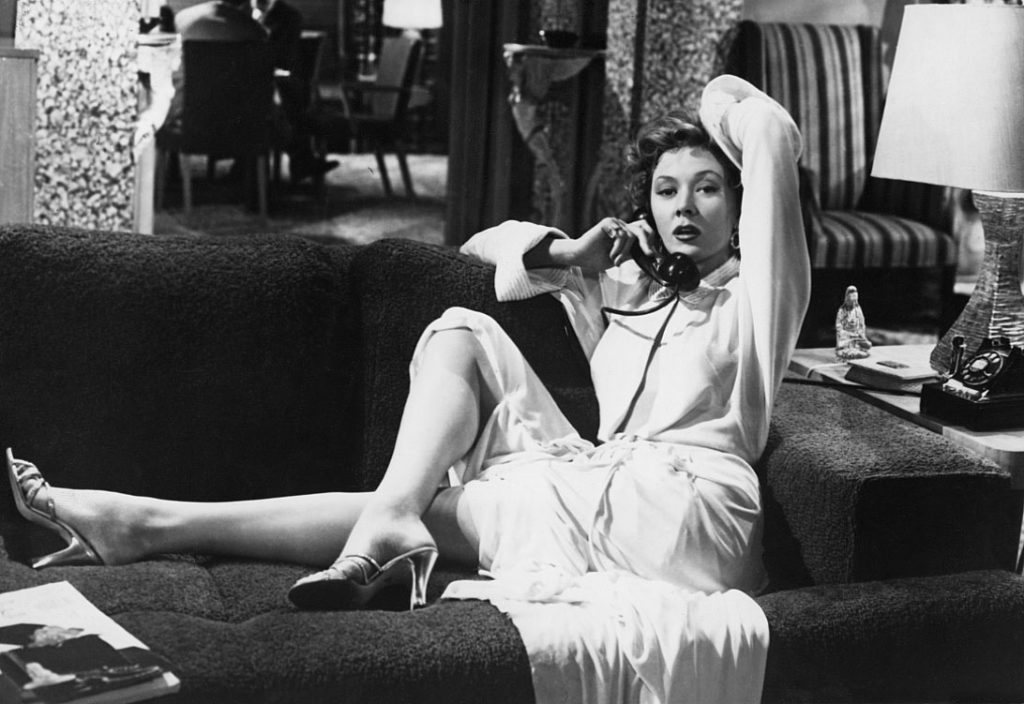
Here is our first look at Debby (Gloria Grahame), who is the girlfriend of Vince Stone (Lee Marvin), right-hand man to the politically powerful gang leader Mike Lagana (Alexander Scourby). Lagana is Bannion’s rival and opposite, though if you ask me, they have more in common than one would initially think.
Debby isn’t a bad character, though there is definitely something in her that comes out toward the end of the film. She’s Vince’s girl (aka a kept woman) and has no problem with living lavishly—actually, she’s rather proud of it—despite where the money comes from. She enjoys parties and drinking and beautiful clothes.
Above, she reclines on a sofa in a sweet white negligee with contrasting striped collar and cuffs, and a strappy pair of mules. We are to understand, right off the bat, that Debby isn’t a bad girl, that there is a vulnerability, a goodness in her.
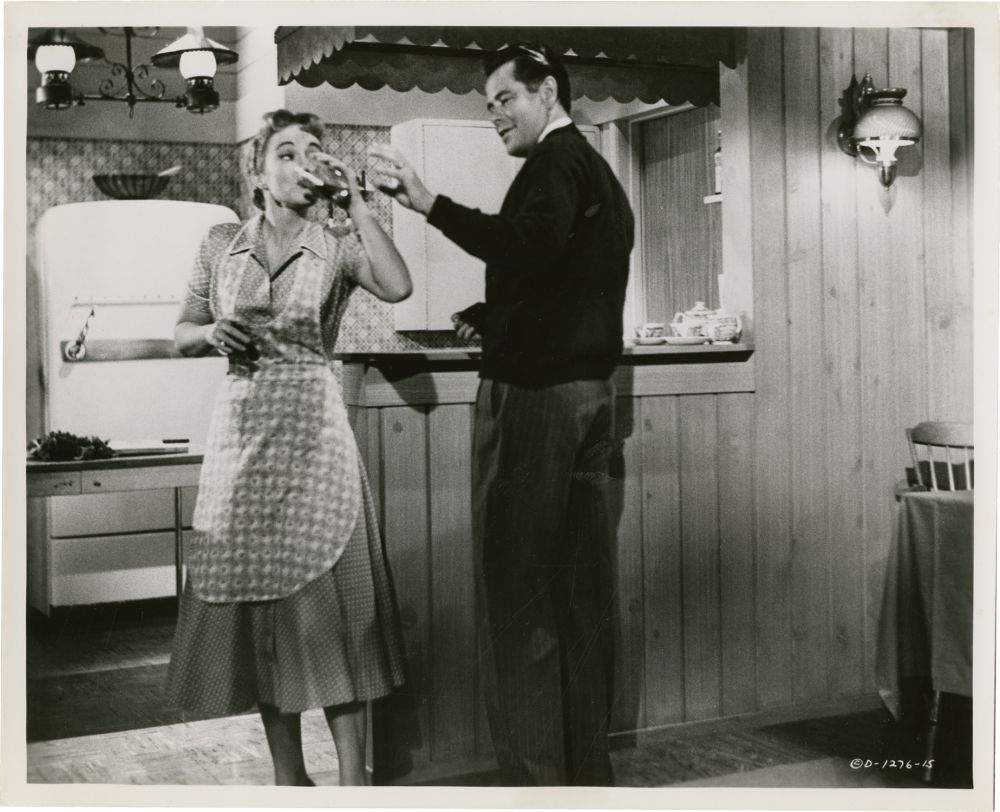
Following typical film noir rules, juxtaposing Debby’s femme fatale persona and lavish lifestyle, is Bannion’s happy domestic wife, Katie (Jocelyn Brando—yes, of that line of Brando’s). Katie’s outfits are conservative, simple, and functional, as were the daily fashions of all American women at this time. This makes Katie relatable for the female audience of the 1950s watching this film, seeing themselves in her. There’s a lot of implicit “good wife” messaging going on, but that’s a story for another day.
Above, Katie wears a simple polka dot frock and apron. Notice she is preparing dinner in heels. Bannion is in his leisure attire of slacks (no suspenders needed) and cardigan worn over a white shirt.
Below, the Bannion’s are expecting company for dinner when a phone call so rudely interrupts those plans. Katie is wearing a black A-line dress with a polka dot bow collar, hair perfectly groomed, meanwhile Bannion has just come home from work, so he’s still in his regular business attire: grey pinstriped single-breasted suit with shirt and tie.
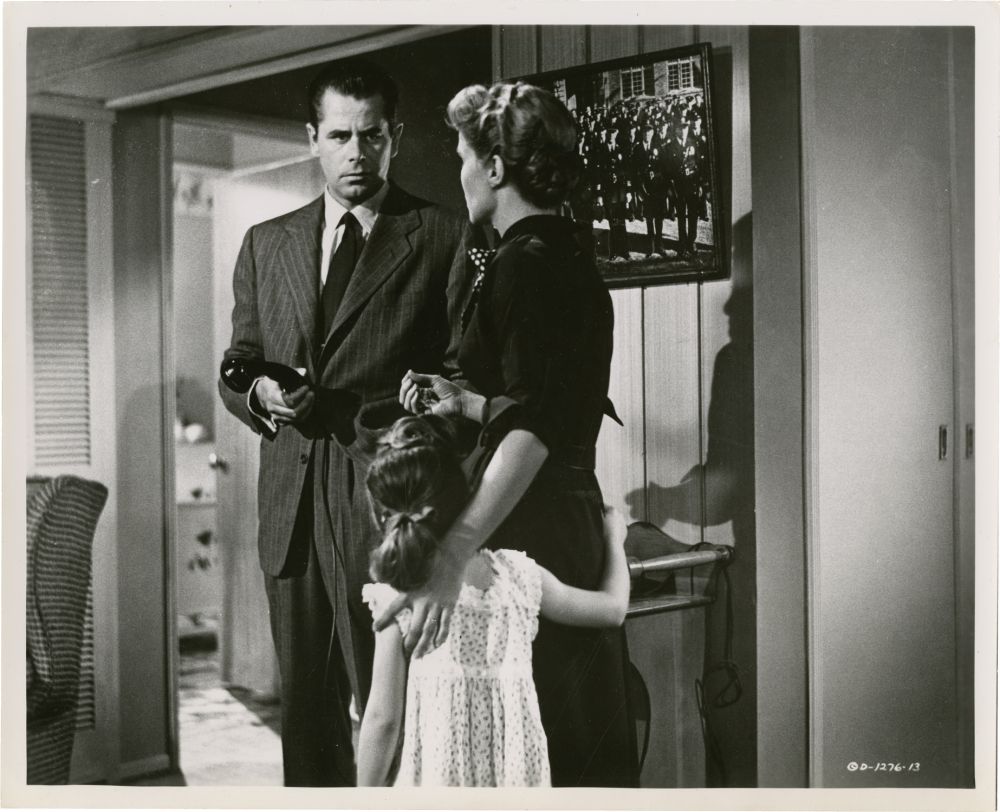
Below is another simple frock for Katie, with buttons all the way up the front, contrasting collar and rolled up sleeves. She never wears anything sexy or extravagant, only sweet and simple, as befits her personality.
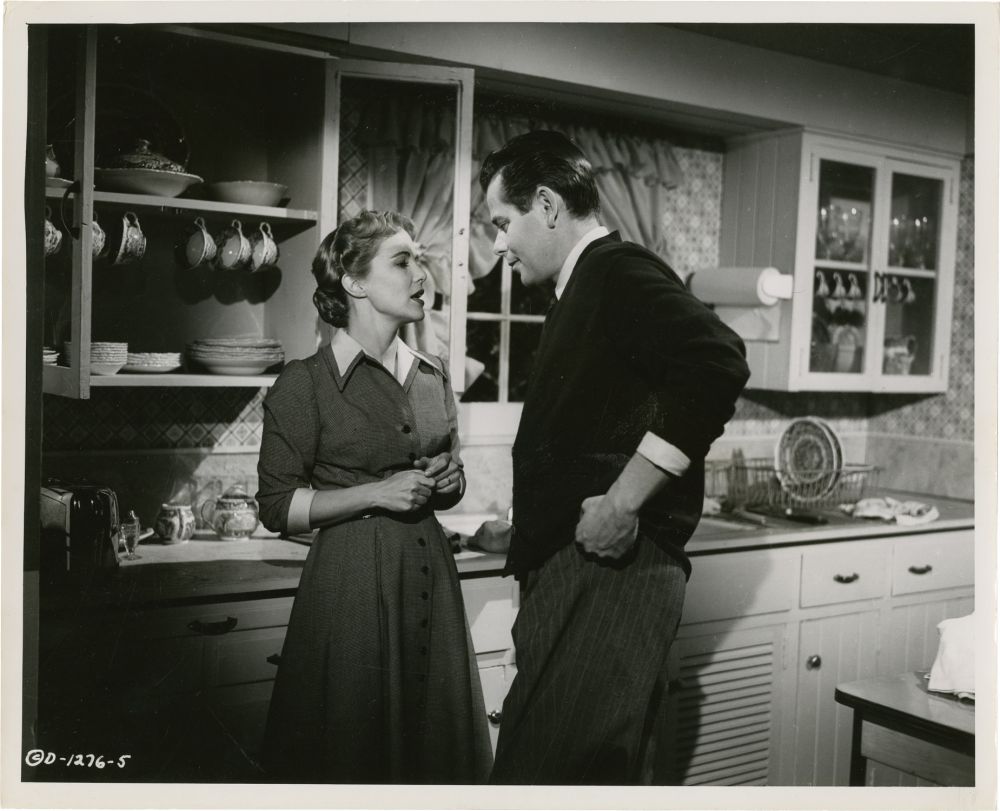
Returning to Debby in a white, very nipped-in waist dress, below. The skirt has a textured pattern to it. It’s really of no surprise this is a scene in which she is jumping around all over the place in that top. Filmmakers were never trying to be subtle with these things.
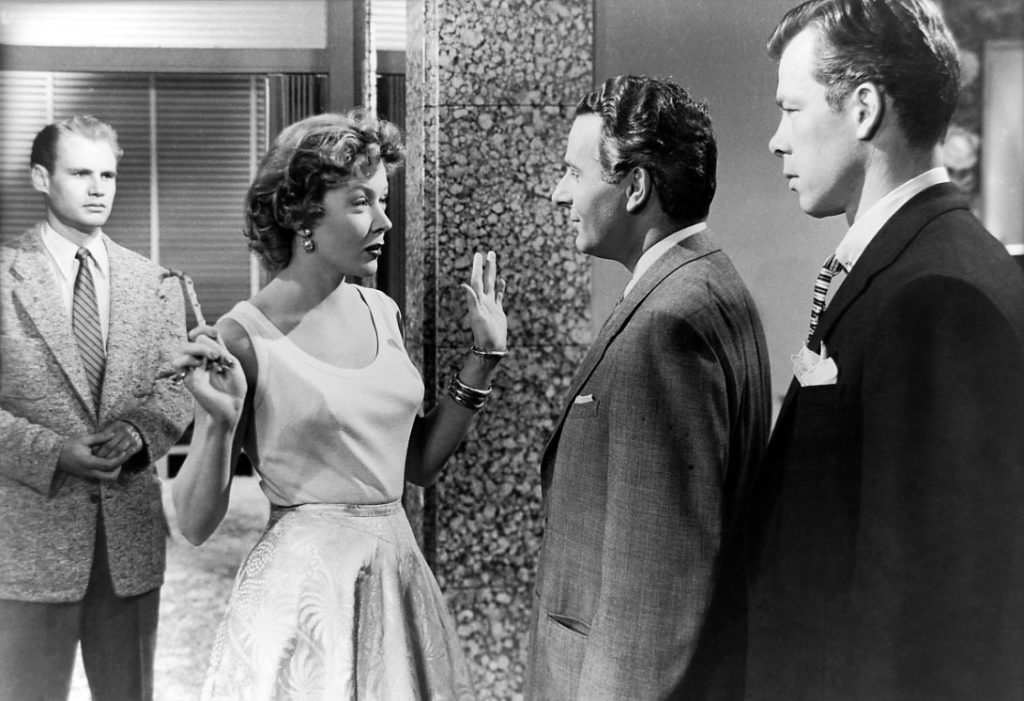
The colour palate, which is about to change for Debby, starts out light and flirty. The next outfit, a black A-line dress paired with a split square neckline and a mink coat, signals a change in Debby’s life. Having previously not really cared or maybe not even realized Vince’s cruelty, Debby’s thinking starts to change in the scene below.
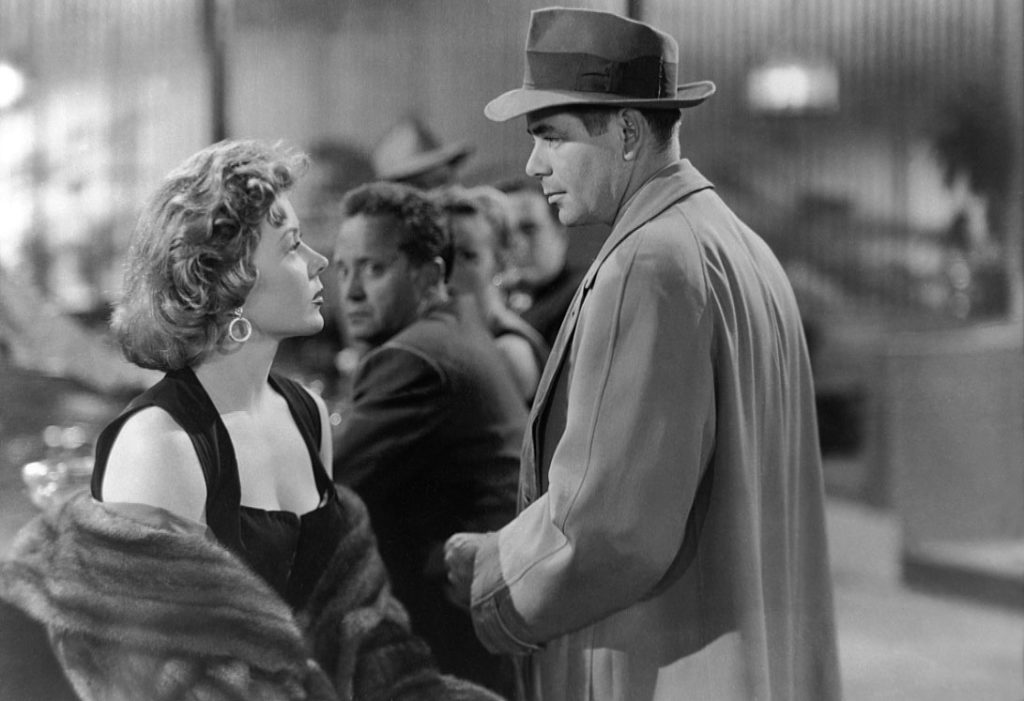
Debby follows Bannion, dressed in his fedora and trench coat (it wouldn’t be a film noir without them, you know) back to his hotel and makes herself comfy. And though he consistently puts off her advances, this doesn’t stop him from helping her out (and accepting, perhaps even signalling for, her help) later in the film.
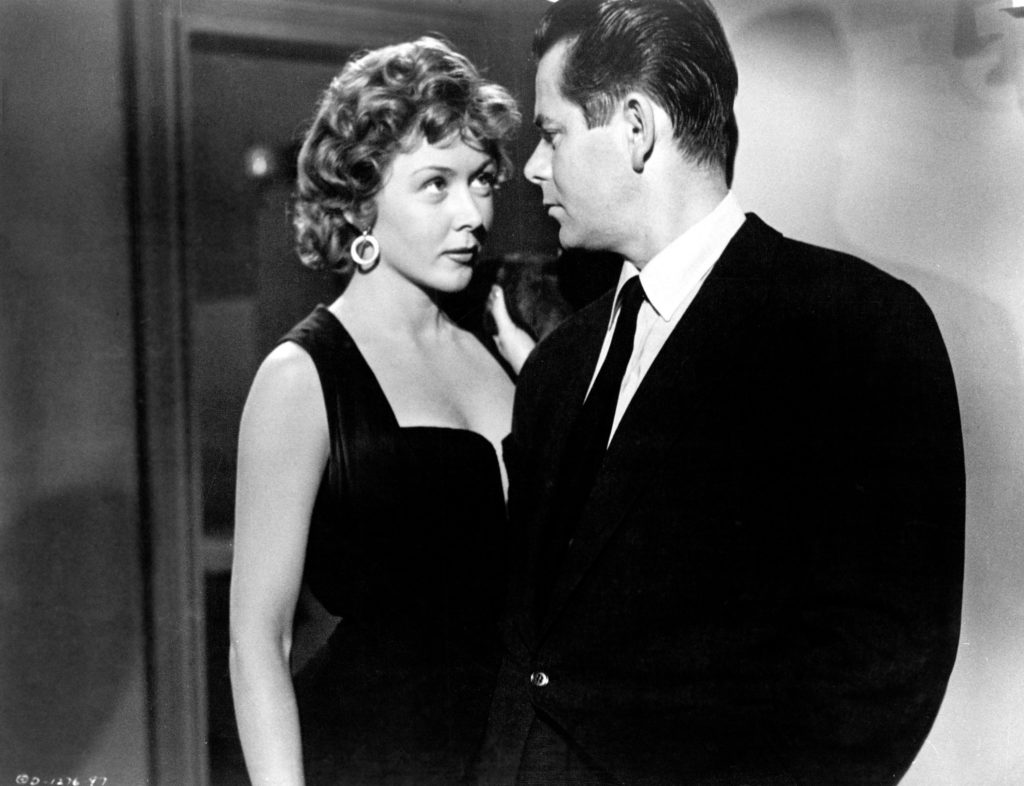
Debby’s transformation is curious, because she is technically going from the ‘bad’ side over to the ‘good’ side, yet her clothing gets darker, not lighter. I believe this reflects her realization of the brutality and terror in her life and in society at large. That bitter realization, in part thanks to Bannion, ultimately leads to her doom.
